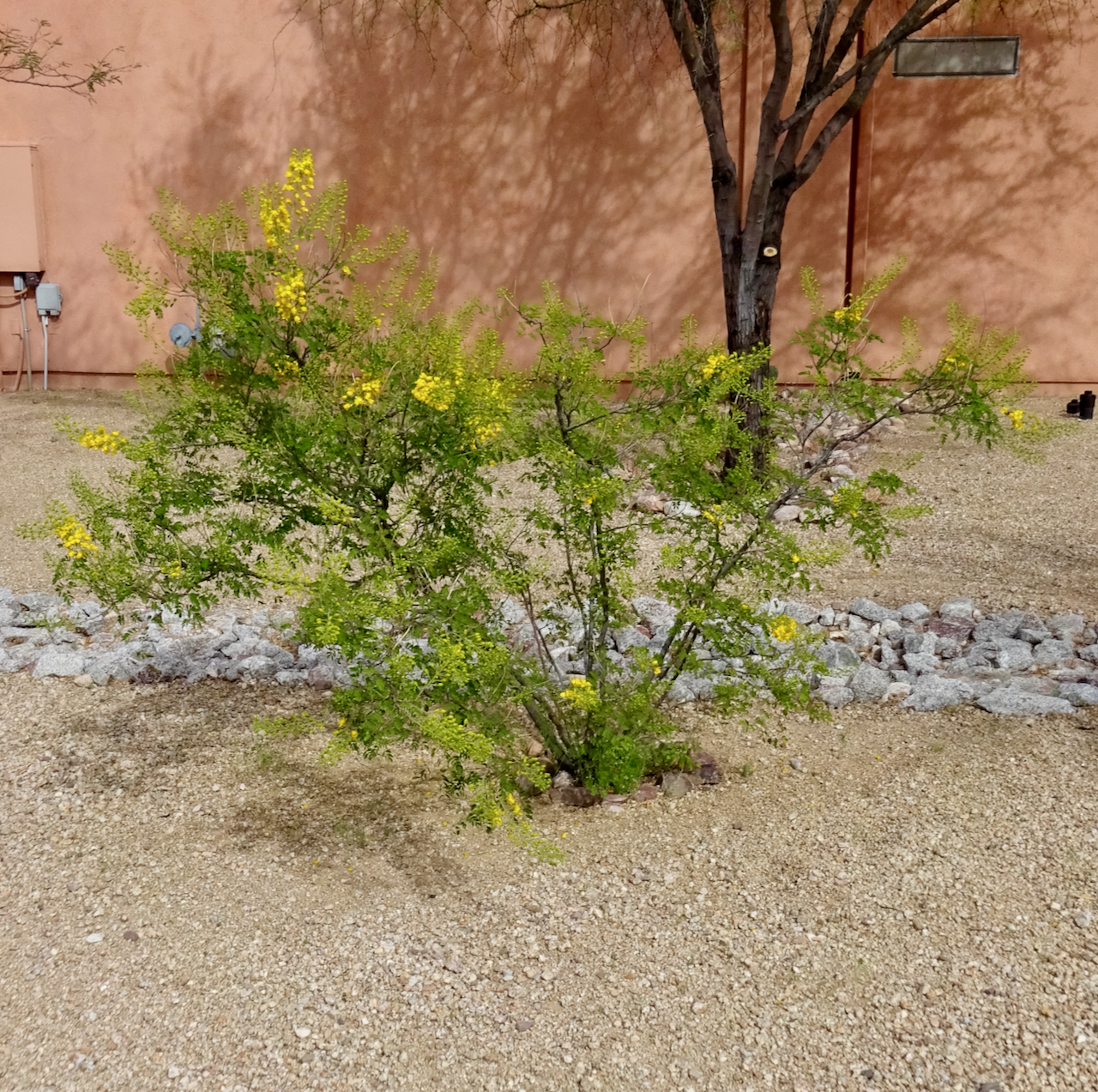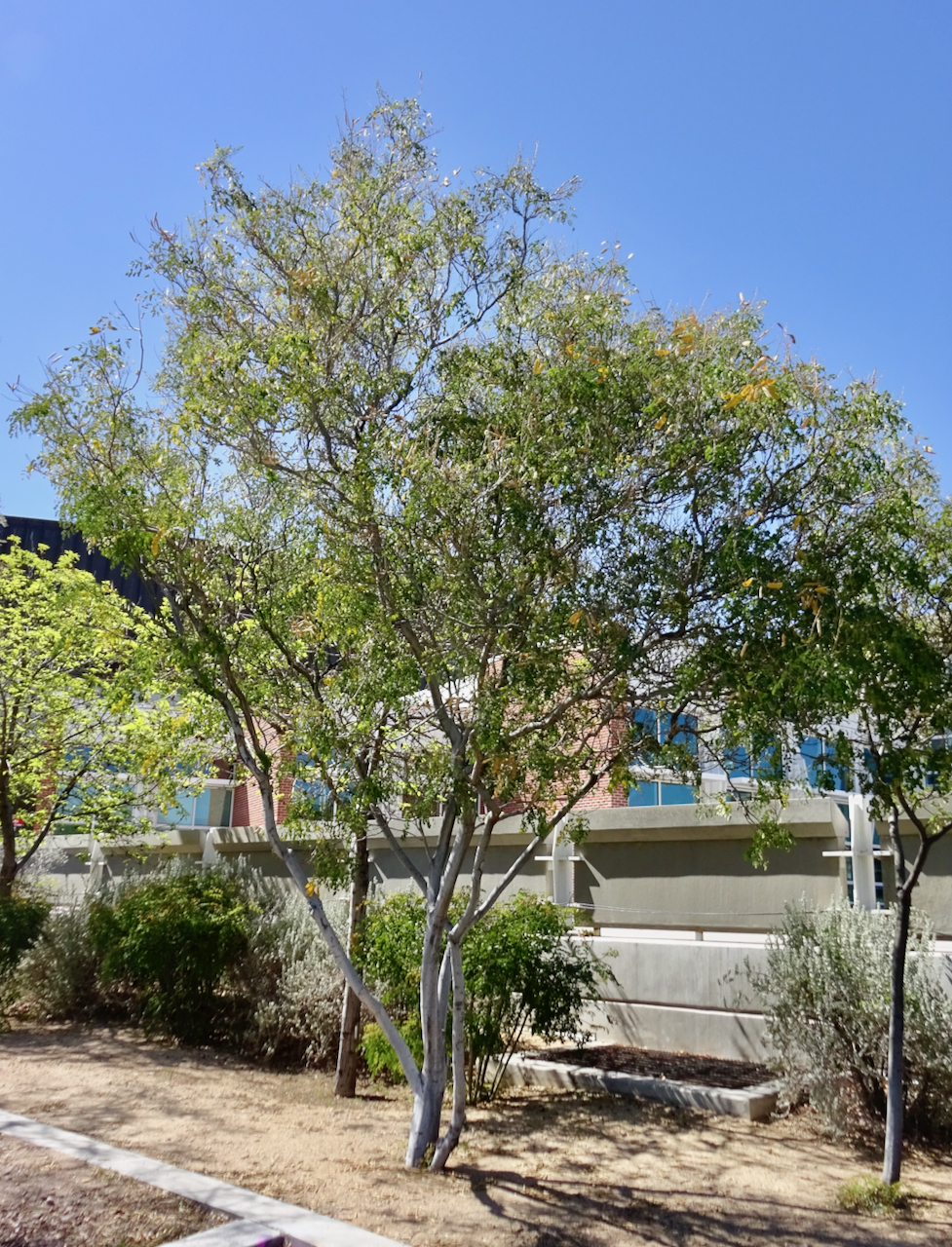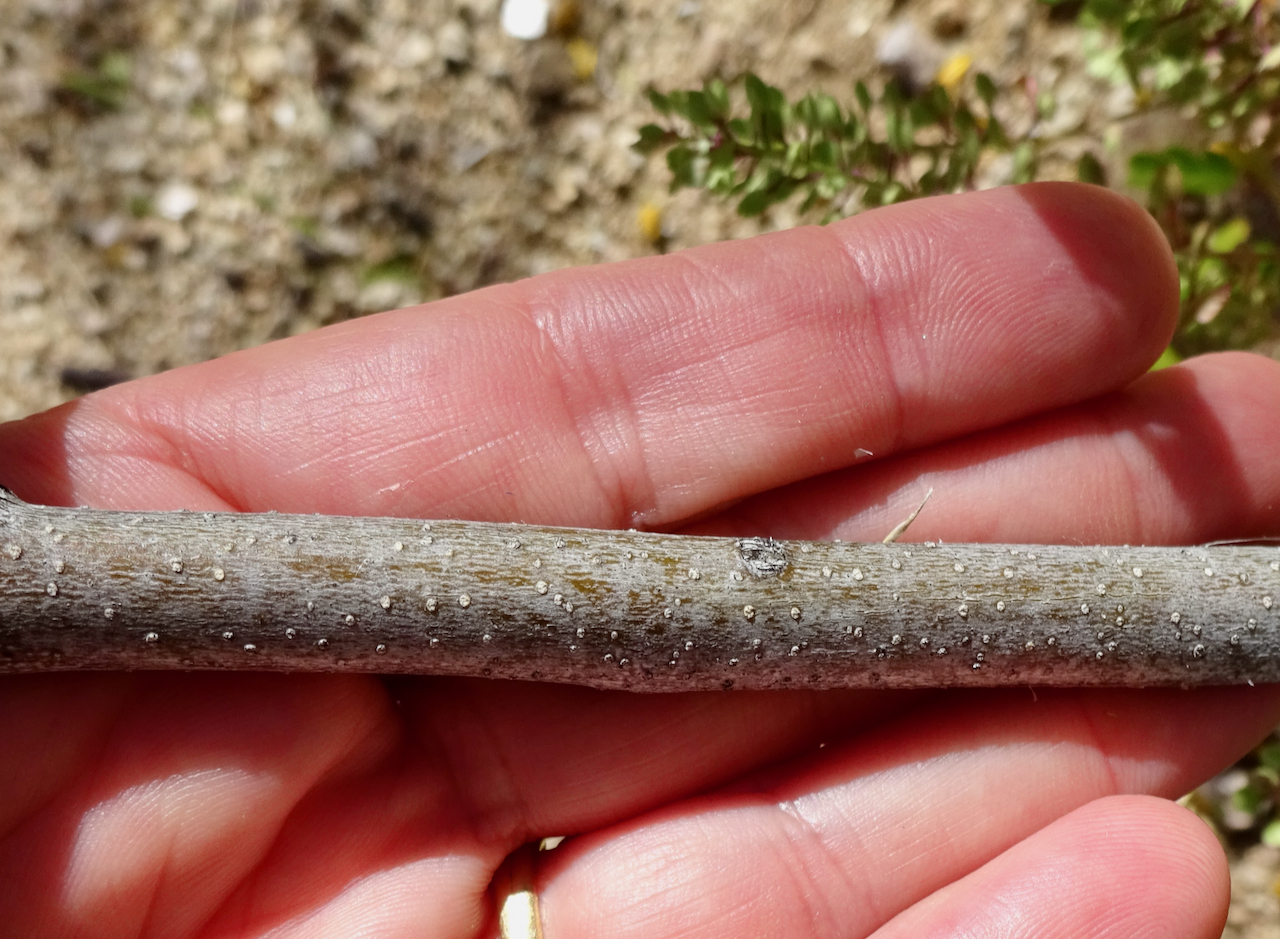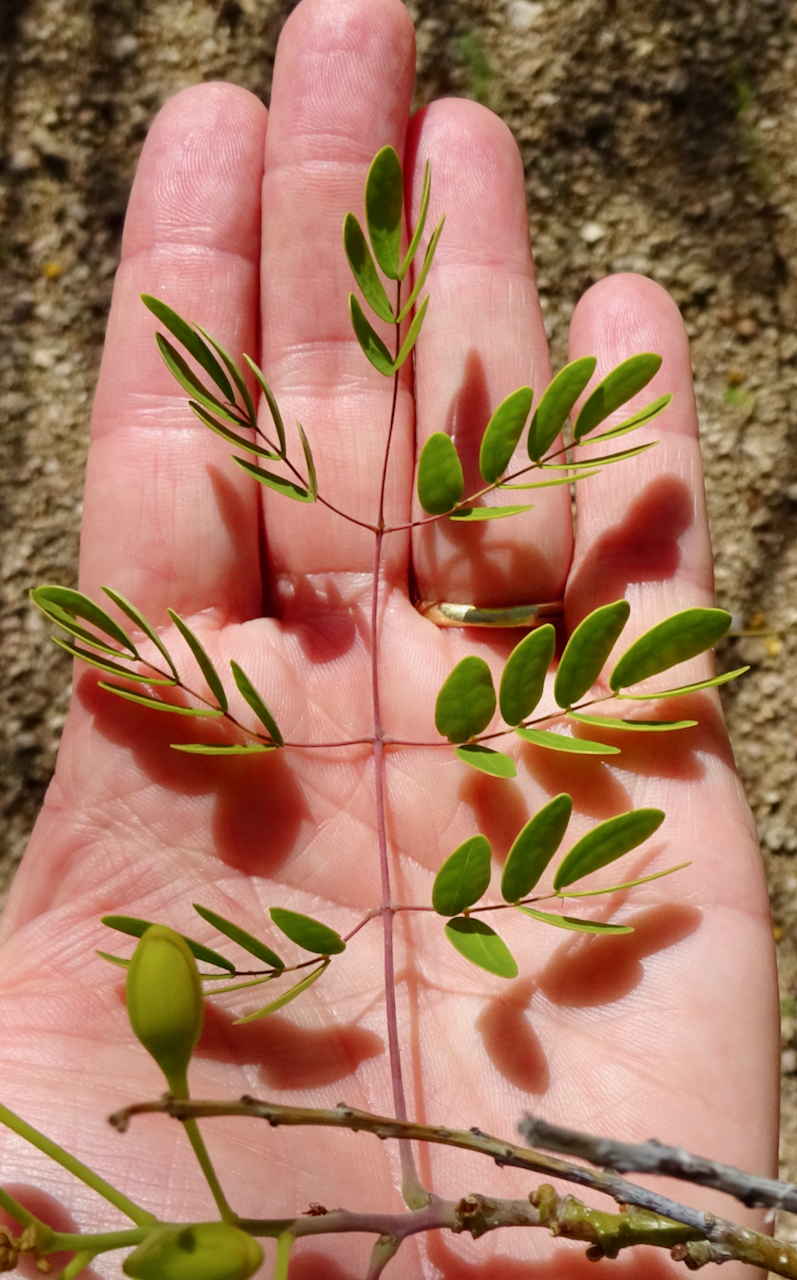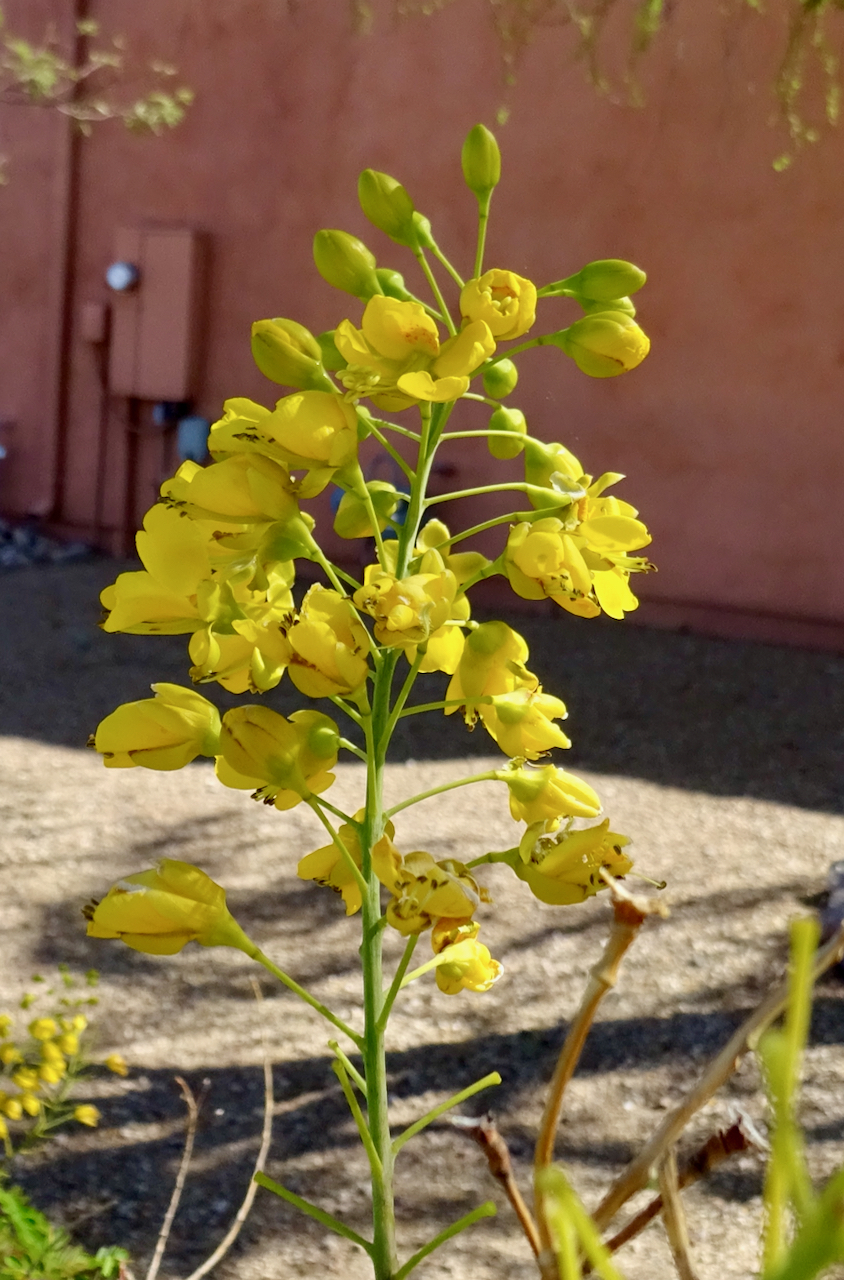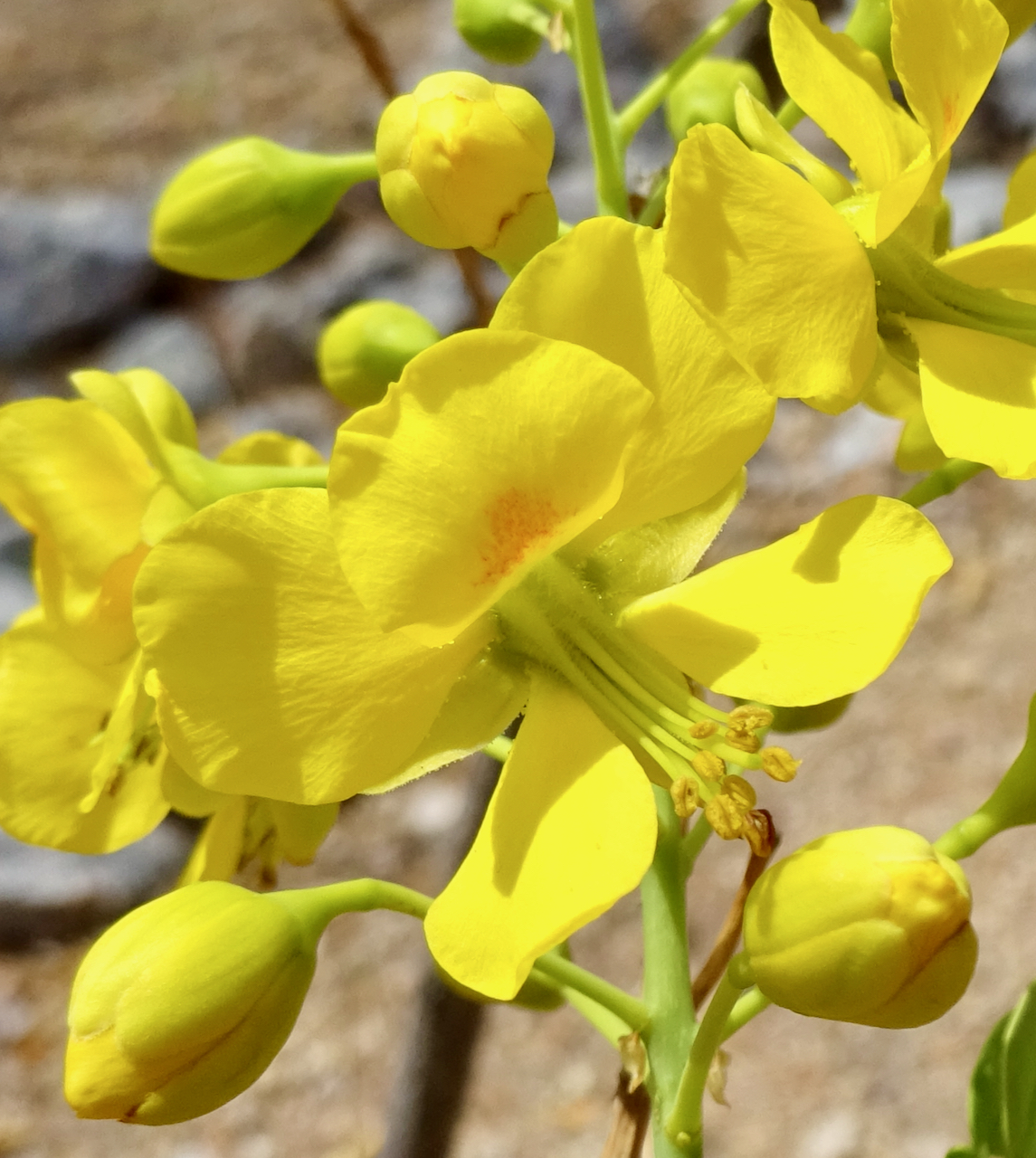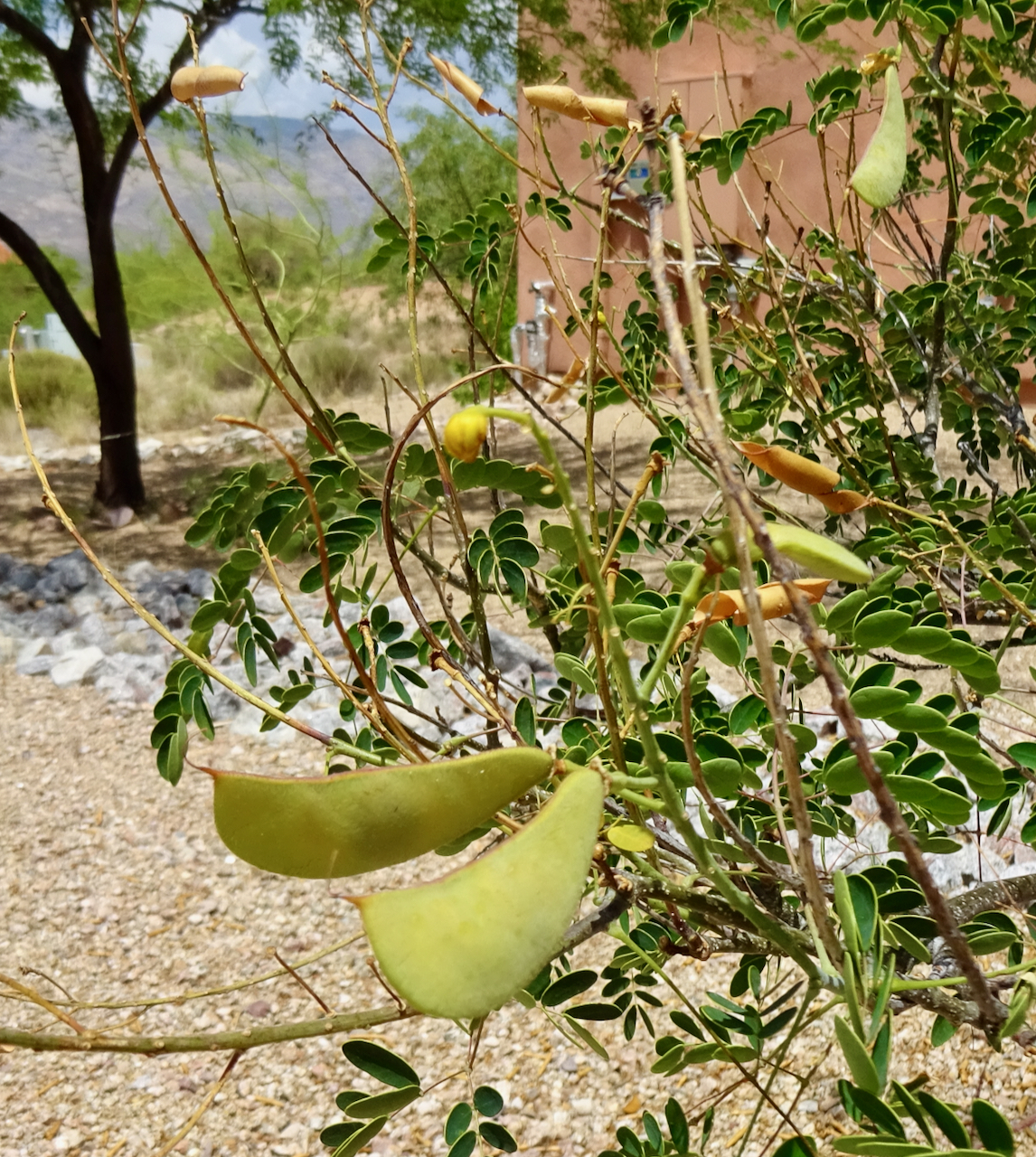Mexican Bird of Paradise
Erythrostemon mexicanus
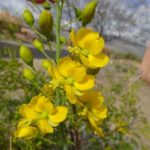
About the Plant
Please note: This plant is sometimes called yellow bird of paradise as well as Mexican bird of paradise and Mexican poinciana. Make sure to use the scientific name of this plant if you try to purchase it at a nursery.
Mexican bird of paradise (Mexican bird) is native to northeastern Mexico near the Rio Grande. It may be native to the very southern tip of of Texas, where it readily grows as an ornamental, but some experts question this (see here for discussion). In the Tucson area it grows as a shrub, evergreen in only the warmest winters, with spires of bright yellow, slightly fragrant flowers, beginning in March and continuing into the summer. Typically growing in our area to no more than 8 feet, it works well in a small garden.
Mexican bird looks best and flowers more reliably if irrigated in summer. It has a naturally open form. Fertilization will increase fullness as will removing spent flower stalks. The wood is brittle. Prune to remove winter-damaged stems and to remove seed pods if they become too heavy. Mexican bird may reseed in an irrigated landscape.
CAUTION: seeds and pods are poisonous.
Notes:
- The previous scientific names for this plant were Caesalpinia mexicana and Poincianella mexicana. These names may still be commonly used in the nursery trade.
- An unrelated plant - Strelitzia reginae - also goes by the name of "bird of paradise". It is used extensively in southern California and is the official flower of the City of Los Angeles.
- Two other plants grown in the Tucson area go by the name of "bird of paradise":
- Red bird of paradise - Caesalpinia pulcherrima. Distinguished by the many short, flexible spines on the stems.
- Yellow bird of paradise - Erythrostemon gilliesii. Distinguished from Mexican bird of paradise by having long, red, showy stamen.
Wildlife value: attracts hummingbirds. In its native range it is a larval plant for the curve-winged metalmark butterfly.
More Information
Weekly Plant on birds of paradise
Horticultural information from ASU (as Poincianella mexicana)
Map of distribution in US (blue means plant is not native; light blue means the plant is found in those counties)
In books:
Trees and Shrubs for the Southwest by Mary Irish, page 141.
